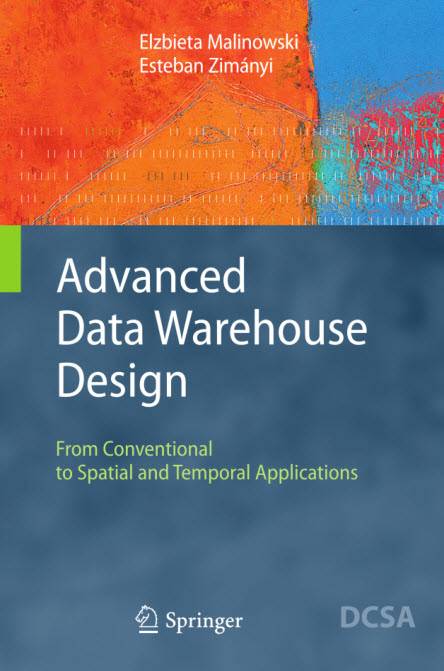Advanced Data Warehouse Design: From Conventional to Spatial and Temporal Applications By Elzbieta Malinowski, Esteban Zimányi
English | PDF | 2009 | 457 Pages | ISBN : 3540744045 | 5.22 MB
A data warehouse stores large volumes of historical data required for analytical purposes. This data is extracted from operational databases; transformed into a coherent whole using a multidimensional model that includes measures, dimensions, and hierarchies; and loaded into a data warehouse during the extraction-transformation-loading (ETL) process.
Malinowski and Zimányi explain in detail conventional data warehouse design, covering in particular complex hierarchy modeling. Additionally, they address two innovative domains recently introduced to extend the capabilities of data warehouse systems, namely the management of spatial and temporal information. Their presentation covers different phases of the design process, such as requirements specification, conceptual, logical, and physical design. They include three different approaches for requirements specification depending on whether users, operational data sources, or both are the driving force in the requirements gathering process, and they show how each approach leads to the creation of a conceptual multidimensional model. Throughout the book the concepts are illustrated using many real-world examples and completed by sample implementations for Microsoft's Analysis Services 2005 and Oracle 10g with the OLAP and the Spatial extensions.
For researchers this book serves as an introduction to the state of the art on data warehouse design, with many references to more detailed sources. Providing a clear and a concise presentation of the major concepts and results of data warehouse design, it can also be used as the basis of a graduate or advanced undergraduate course. The book may help experienced data warehouse designers to enlarge their analysis possibilities by incorporating spatial and temporal information. Finally, experts in spatial databases or in geographical information systems could benefit from the data warehouse vision for building innovative spatial analytical applications.



